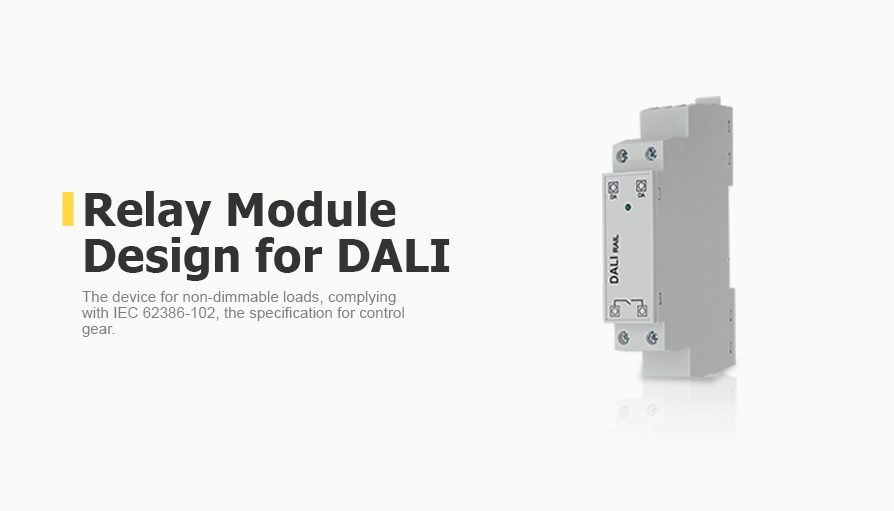DALI Relay Module: Seamless Integration of Non-Dimmable Ballasts for Lighting Control
Client
European manufacturer of electrical equipment. The company plans to integrate a compact relay module into its product range.
Challenge
Our engineers get a task to develop a compact relay module with advanced features for integrating non-dimmable ballasts into DALI lighting systems.
* DALI (Digital Addressable Lighting Interface) is a dedicated protocol for digital lighting control.
Solution
1. Concept Development
We developed a concept of the future device with the following features:
- A compact relay module for directly controlling 230V AC loads via DALI.
- Ballasts without DALI input can be integrated into a DALI system to switch the ON and OFF loads by DALI commands.
- The DALI module fulfils the DALI Device Type 7 requirements — switching function.
- Configurable power-up and system failure behaviour.
- Software package for configuration of DALI systems.
- The module is supplied directly by the DALI signal line.
- Zero cross-switching.
- An integrated current limiter, suitable for loads with high inrush current (>100A).
The DALI module acts like any conventional DALI ballast and can be addressed and configured accordingly.
2. Hardware Design
We used Altium Designer to design the PCB layout. Our engineers implemented this project using a Microchip (Atmel) AVR XMEGA E microcontroller. We also performed signal integrity, power integrity, and thermal modelling for the project.
3. Software Development
The software of the relay module utilises the drivers in the ASF (Atmel Software Framework), which is integrated with Atmel Studio. The drivers include TC, USART, XCL, EDMA, etc.
Addressing and configuration
Each DALI module can be addressed (random addressing) and configured with the DALI software. This ability allows for individual control and configuration of each module within the DALI system. Also, it is simplified maintenance in a system by offering centralised control and monitoring capabilities.
When using the DALI software, the PC must be connected to the DALI bus via a suitable interface module (DALI-2 USB). It will be automatically recognised by the DALI software during the addressing process and listed in the device overview. The DALI device settings can be configured in the DALI software. The DALI-2 version offers the "identify" function for localisation after addressing.
Functions
The DALI module serves as a controlled relay contact, allowing ballast integration into the DALI system and switching them on and off via DALI commands.
This new module functions as a standard DALI ballast for non-dimmable loads and adheres to the DALI specification for control gear (IEC 62386-102) and device type 7 extension (IEC 62386-208). The switching characteristic is determined by comparing the virtual direct arc power level (VDAP) to four thresholds. The VDAP is similar to the dim-level of DALI ballasts.
The DALI module is bus-powered. The reaction on a system failure can be configured (keep relay state, on or off, factory default: keep state MASK). In case of switching on the DALI-line supply voltage, the “power on” level is applied.
4. Manufacturing Support
The client received a complete documentation package for the serial production of the device.
Business Value
The client intends to incorporate the compact relay module into its product line. By doing so, they aim to offer their customers, including contractors, electricians, and system integrators, a seamless integration solution for non-dimmable ballasts within DALI lighting systems. This integration will give their customers improved functionality and flexibility in their lighting setups.
















